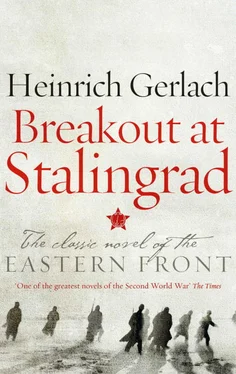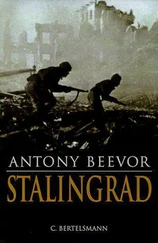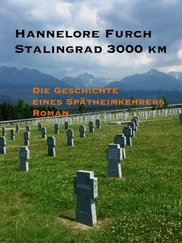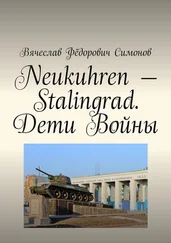The documents of which I had sight, which also allow us to draw inferences concerning the official attitude towards the BDO and Seydlitz in the Federal Republic from the mid-1950s on, confirm the following: on 26 April 1944, the Supreme German Military Court, with its senate chairman General Staff Judge Schmauser presiding, sentenced General von Seydlitz alone to death in absentia, declaring him ‘ineligible for military service’ and ordering that his property be seized. As the highest military tribunal of the Third Reich, the Supreme Military Court cited as grounds for its verdict General von Seydlitz’s activities as president of the BDO and vice-president of the National Committee for a Free Germany. Evidence of the cited offence came in the form of several copies of the newspaper Free Germany, pamphlets signed by Seydlitz and personal letters. The Supreme Military Court had instituted proceedings against the BDO and the National Committee as early as the end of 1943 on Hitler’s orders. Generals Korfes, Edler von Daniels, Lattmann, Hofmeister and Vincenz Müller were also targeted in this indictment. Other officers who were identified as being especially active within the BDO were Captain Hadermann and Major Bechler, but also First Lieutenant Heinrich Gerlach. However, at that time the incriminating evidence available was only sufficient to put General von Seydlitz on trial. The instruction to proceed with the prosecution came directly from Hitler via the head of the High Command of the Wehrmacht. The legal basis for the charge against General von Seydlitz was the amendment made during the war to Paragraph 59 Section 2 of the Wartime Penal Code ( Kriegsstrafverfahrensordnung ; KstVO), which stipulated that it was still possible to proceed against a defendant whose whereabouts were unknown if the gravity of the charge warranted it. The prosecution in the case against General von Seydlitz was conducted by Alexander Kraell, who as president of the Second Senate of the Supreme Military Court had already been the presiding judge in the trial of the ‘Red Orchestra’ resistance group. In November 1955 Kraell appeared as a witness in the preliminary proceedings against Seydlitz, where he gave evidence concerning the circumstances surrounding the death sentence passed in April 1944. Under cross-examination on 30 November 1955, Kraell described the original trial, and emphasized that the most damning evidence had been four to six letters that General von Seydlitz had sent to front-line commanders whom he knew. Kraell made the following statement for the record:
In these letters, after referring to his former acquaintance with the addressees, Seydlitz launched into a long disquisition promoting his ideas and concluded, as I recall, by demanding that the Sixth Army should retreat and surrender. The letters were examined by both handwriting experts and psychiatrists – the latter because we had to entertain the possibility that his handwriting might reveal that he had been under the influence of drugs, or duress or something of the sort when he wrote it. The experts’ reports vindicated the original charge.
In the course of the 1944 trial of General von Seydlitz, Kraell continued, alongside the many newspaper articles and pamphlets, the Supreme Military Court also adduced as evidence a number of photographs showing Seydlitz ‘in the company of Weinert, Pieck and others’. Ultimately, he said, the total body of evidence ‘was easily sufficient to ensure the conviction of General von Seydlitz’. In his capacity as a witness ten years after the end of the war, Kraell summed up the outcome of the 1944 prosecution thus: ‘In response to my application, on the charge of military treason in conjunction with that of high treason Seydlitz was sentenced to death, pronounced unfit for military service and stripped of all his human rights.’ According to Kraell’s statement, ‘on Hitler’s orders’ proceedings continued ‘against the rest of those accused, yet with no satisfactory outcome in the shape of formal charges being brought’. As a result of the assassination attempt against Hitler on 20 July 1944, the case was transferred (again by order of the Führer) from the Supreme Military Court to the Reich Attorney General at the People’s Court. In the end, despite more evidential material being gathered, no prosecution was ever brought against other members of the BDO and the National Committee.
Admittedly, going on what Erich Weinert told him in April 1944, Heinrich Gerlach could only assume that he, too, had been sentenced to death. His fears on this score appeared to be borne out a couple of months later, after it transpired that the families of prominent figures in the BDO had been taken into custody under Hitler’s orders. Yet at that stage, Gerlach had no idea that his own family was among them. The Gerlach family’s ordeal began in July 1944 and only ended on 30 April 1945, when American troops entered Neuschwanstein near the town on Füssen in Bavaria, where they had been interned, and the war came to an end.
Instead, some months later another report prompted an outbreak of positive euphoria in Lunyovo. Four days after publication of Gerlach’s dystopian vision of his home town of Lyck, Erich Weinert was once again the bearer of momentous tidings, bursting into the camp on 20 July 1944 with news of the attempt on Hitler’s life. The officers and other members of the National Committee thought their moment had come at last; finally, they hoped, senior Wehrmacht officers had seized the reins of power in Germany. The euphoria only lasted for a few hours. Later that day, Greater German Radio announced that Hitler had survived. Over the weeks that followed, the members of the BDO, Gerlach included, felt paralysed, as reports came in of the arrests and executions of the group of conspirators around Claus von Stauffenberg, scotching all hope of Hitler being toppled from power. Not even the declaration on 8 August by Field Marshal Paulus and other Stalingrad generals that they were joining the BDO could alter this mood of despondency. Heinrich Gerlach summed up the hopelessness many members of the BDO now felt regarding their own chances of ever being able to take effective action:
They [i.e. Paulus and the other officers] joined our ranks after realizing that everything had turned out the way the National Committee and the League of German Officers predicted it would. But this realization came too late. They themselves have come too late. A year too late. Now there’s no hope of changing or saving anything, and fate has taken its course. The fate of Stalingrad has been visited upon Germany itself.
Even the brief celebration on 22 August 1944 to mark General von Seydlitz’s 56th birthday could not halt the creeping demise of the BDO, as Gerlach saw it. While the speeches praising Von Seydlitz and the sight of prominent Wehrmacht generals strolling around in the company of communists like Wilhelm Pieck and Erich Weinert still conveyed the impression of a self-confident group of opponents of Hitler, ultimately the BDO’s scope for action continued to dwindle in the light of the ongoing military situation. I found a photograph album in the special archive containing important images of the work of the BDO and its representatives.
As the front crept ever closer to the borders of the German Empire, Heinrich Gerlach felt himself to be in an almost schizophrenic situation. During the day, he would find himself caught up in the infectious optimism generated in Lunyovo by the prospect that the war might soon end. But at the same time, he knew what that meant. Setting aside his personal fears about the way in which the Red Army might conduct itself as it advanced, he wrote several articles attacking the prevailing ‘bogey man’ image of Bolshevism. For instance, his piece ‘Dance of Death Around a Lie’, which was published in the 24 September 1944 edition of Free Germany , began as follows:
Читать дальше












